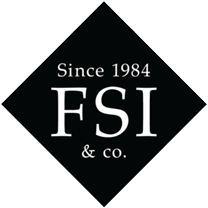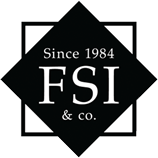- Proof of established business as of February 15, 2020
- 2019 or 2020 Payroll tax returns – Forms 941 and state unemployment
- 2019 or 2020 Schedule C or Form 1065 K1s for self-employed/ partnership borrowers
Author: Frank Infurchia
PPP – Second Draw Loans
- Employ no more than 300 employees per physical location;
- Have used or will use the full amount of their first PPP loan; and
- Demonstrate at least a 25% reduction in gross receipts in the first, second, or third quarter of 2020 relative to the same 2019 quarter. Applications submitted on or after Jan. 1, 2021 are eligible to utilize the gross receipts from the fourth quarter of 2020.
Payroll Tax Deferral – Effective 9/1
- Any company that has payroll is considered affected by COVID-19 and is eligible to participate in the deferral program.
- The employer makes the decision on whether or not they will participate in the deferral program.
- The deferral period for the 6.2% social security tax begins 9/1/2020 and ends 12/31/2020.
- The repayment period begins on 1/1/2021 and ends 4/30/2021. The employer is required to withhold the deferred amount ratably over that period. If repayment isn’t made by 4/30/2021, then penalties, interest, and additional taxes will begin to accrue 5/1/2021.
- There is an exception to withholding the amount ratably during the repayment period, the IRS states that “If necessary the employer may make arrangements to otherwise collect the total applicable taxes from the employee”. The IRS doesn’t expand on this, but presumably, could this mean that if an employee is terminated or leaves before 4/30/21 that the employer can withhold the entire deferral amount from the employee’s final paycheck? Perhaps, but more information is needed on this.
- Eligible wages are wages paid to any employee whose bi-weekly pay doesn’t exceed $4,000 (pay rates prior to 9/1/2020 are not considered – meaning if the employee was making more than $4,000 bi-weekly prior to 9/1/2020 it doesn’t preclude them from participating).
- Applicable wages are determined on a pay-period by pay period basis – so if an employee’s wages exceeds the $4,000 threshold the first bi-weekly pay period but then is under the threshold the second pay period then the second pay period’s social security tax is eligible for deferral.
- There is no indication whether individual employees can opt-out if the employer decides to participate in the deferral program.
PPP Revised Forgiveness Application & New IFR
June 19, 2020
The SBA released new forgiveness applications (yes, plural) to incorporate the most recent legislation from the Paycheck Protection Program Flexibility Act of 2020 which became law on June 5th. The following was summarized by our friends at the Journal of Accountancy published by the AICPA.
Keep in mind that the deadline to apply for PPP loans remains June 30. After that date, no new PPP loan applications will be accepted.
Two new forgiveness applications were released
The revised PPP Loan Forgiveness Application and instructions include a number of notable items. Among them are:
- Health insurance costs for S corporation owners cannot be included when calculating payroll costs; however, retirement costs for S corporation owners are eligible costs.
- Safe harbors for excluding salary and hourly wage reductions and reductions in the number of employees (full-time equivalents) from loan forgiveness reductions can be applied as of the date the loan forgiveness application is submitted. Borrowers don’t have to wait until Dec. 31 to apply for forgiveness to use the safe harbors.
- Borrowers that received loans before June 5 can choose between using the original eight-week covered period or the new 24-week covered period.
Click the links to access the revised PPP forgiveness application (link) and instructions (link)
The EZ PPP Loan Forgiveness Application requires fewer calculations and less documentation than the full application. The EZ application can be used by borrowers that:
- Are self-employed and have no employees;
- Did not reduce the salaries or wages of their employees by more than 25% and did not reduce the number or hours of their employees; or
- Experienced reductions in business activity as a result of health directives related to COVID-19 and did not reduce the salaries or wages of their employees by more than 25%.
Click the links to access the EZ PPP forgiveness application (link) and instructions (link)
New Interim Final Rule (IFR)
The SBA issued rules (link) Tuesday night for determining payroll costs and owner compensation in calculating PPP loan forgiveness under the new 24-week covered period.
- The PPP allows loan forgiveness for payroll costs — including salary, wages, and tips — for up to $100,000 annualized per employee, or $15,385 per individual over the eight-week period. The new interim final rule establishes the 24-week maximum for full loan forgiveness at $46,154 per individual.
- While the employee compensation limit for the 24-week period is three times the eight-week limit, the interim final rule does not do the same with the owner compensation replacement for businesses that file Schedule C, Profit or Loss From Business, or Schedule F, Profit or Loss From Farming, tax returns. For those businesses, forgiveness for the owner compensation replacement is calculated for the eight-week period as 8 ÷ 52 × 2019 net profit, up to a maximum of $15,385. For the 24-week period, the forgiveness calculation is limited to 2.5 months’ worth (2.5 ÷ 12) of 2019 net profit, up to $20,833.
The interim final rule also modifies earlier guidance to account for changes included in the Payroll Protection Flexibility Act.
- The minimum term for PPP loans is raised to five years for all loans made on or after June 5. For loans made before June 5, the two-year minimum maturity remains in effect unless both the borrower and the lender agree to extend it to five years.
- The proportion of PPP funding that must be used on payroll costs to qualify for full forgiveness drops to 60% from 75%.
- The application deadline for PPP loans remains June 30.
We are available to discuss this newly released information. Please call us at 203-852-7088 or email if you have questions.
This PPP loan guidance and information continues to change on a daily basis and as it does, we will keep you up to date.
PPP – Senate Passed New Forgiveness Extensions & Relief
After hours on Wednesday, June 3 the Senate unanimously passed the Paycheck Protection Flexibility Act (link) which grants extension and relief measures for those who received PPP loans. This is expected to be signed into law by the President shortly.
The following is a summary of the legislation’s main points compiled by the AICPA:
- PPP borrowers can choose to extend the eight-week period to 24 weeks, or they can keep the original eight-week period. This flexibility is designed to make it easier for more borrowers to reach full, or almost full, forgiveness.
- The payroll expenditure requirement drops to 60% from 75%.but is now a cliff, meaning that borrowers must spend at least 60% on payroll or none of the loan will be forgiven. Currently, a borrower is required to reduce the amount eligible for forgiveness if less than 75% of eligible funds are used for payroll costs, but forgiveness isn’t eliminated if the 75% threshold isn’t met.
- Borrowers can use the 24-week period to restore their workforce levels and wages to the pre-pandemic levels required for full forgiveness. This must be done by Dec. 31, a change from the previous deadline of June 30.
- The legislation includes two new exceptions allowing borrowers to achieve full PPP loan forgiveness even if they don’t fully restore their workforce. Previous guidance already allowed borrowers to exclude from those calculations employees who turned down good faith offers to be rehired at the same hours and wages as before the pandemic. The new bill allows borrowers to adjust because they could not find qualified employees or were unable to restore business operations to Feb. 15, 2020, levels due to COVID-19 related operating restrictions.
- Borrowers now have five years to repay the loan instead of two. The interest rate remains at 1%.
- The bill allows businesses that took a PPP loan to also delay payment of their payroll taxes, which was prohibited under the CARES Act.
You can access the PPP Loan Forgiveness Application, instructions and worksheets here (link).
The AICPA has provided a thorough and free loan forgiveness Excel calculator which is updated as guidance is released, which can be found here (link)
We are available to discuss this newly released information. Please call us at 203-852-7088 or email if you have questions.
This PPP loan guidance and information continues to change on a daily basis and as it does, we will keep you up to date.
PPP Loan – Forgiveness Instructions & Application
PPP Loan – Certification of Need – New Info
PPP Loan – Forgiveness & Certification of Need
SBA Forgivable Loan – Paycheck Protection Program (PPP)
There is much news about the Paycheck Protection Program (PPP), which is the forgivable loan backed by the SBA. Below is the relevant information you need in order to apply. All of this information is accessible by going to SBA Website – PPP section
PPP Borrower Guide Information sheet – issued by Dept of Treasury: Click Here
PPP Application: Click Here
Lenders will begin processing applications on April 3, according the SBA
It is our understanding and that of the AICPA that virtually all banks and credit unions will be able to process these applications, but you should check with your local banker and discuss this Lenders Guide to be sure.
We remain available to assist in any way we can. Please feel free to share this information.
Sincerely,
Francis S. Infurchia & Company, LLC
SBA Loans and Tax Updates – 3/30/2020
On Friday March 27, 2020, the President signed the Coronavirus Aid, Relief, and Economic Security Act (CARES) act into law which among other things, infused $349 billion of loan funds to the SBA. Additionally, there are some major changes to tax law which we have outlined below.
SBA Loan Program
These new SBA loan amounts are generally limited to approximately 2.5 months of payroll/ operating expenses. The SBA loans may be conditionally forgiven provided they are used for payroll and other specific operating costs of a business.
You can apply for these loans by going to www.sba.gov/disaster.
Our trusted colleagues at Whitman Breed Abbott Morgan have written an excellent analysis regarding these SBA loans. Click here for their analysis
Tax Updates
Our tax research and update partner Thomson Reuters has provided great insight regarding the many relevant tax updates associated with the CARES Act which we are passing along.
Relevant individual tax updates include the below and can be found here:
- $1,200 stimulus rebate
- Waiver of 10% penalty on early IRA withdrawals due to COVID-19
- RMD requirement waived for 2020
- $300 above the line deduction for charitable giving
Relevant business tax updates include the below can be found here:
- Employee retention tax credit
- Delay of ‘employer side’ payroll tax deposits
- 5 year net operating loss carryback
- Interest expense income limitation increased
- Technical correction of 15-year qualified improvement property
We remain available to assist in any way we can. Please feel free to share this information.

